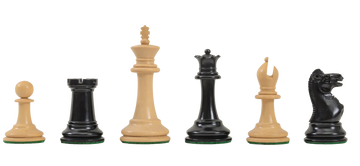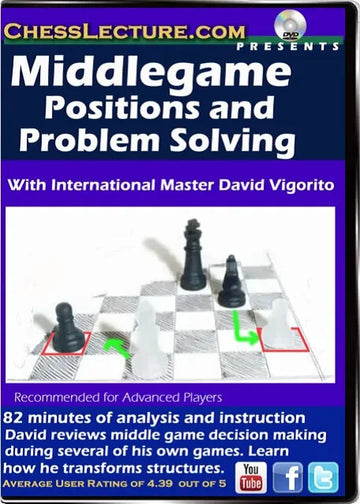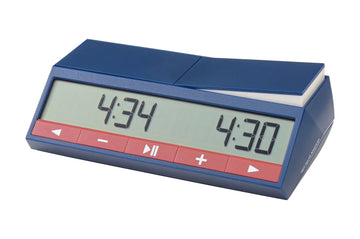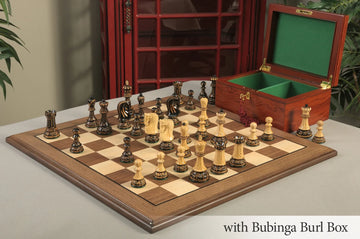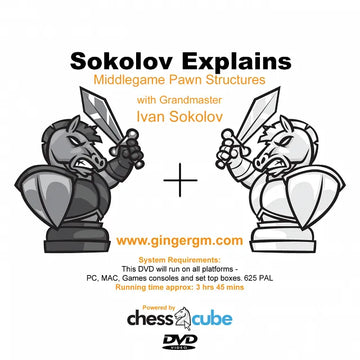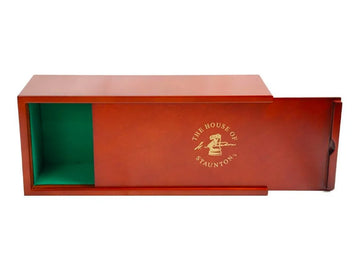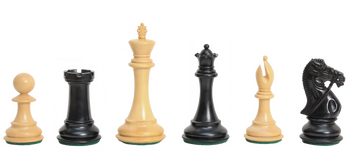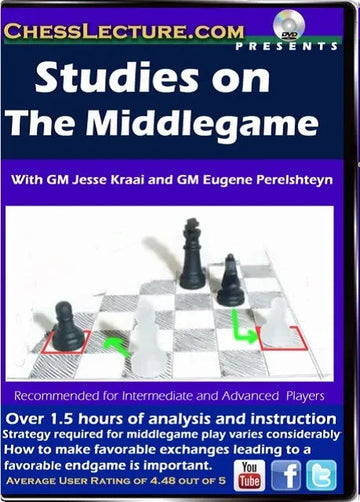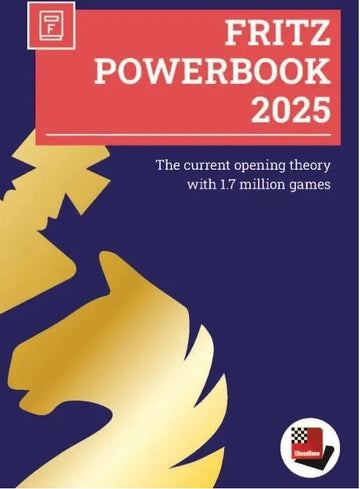Improve Your Chess Middle Game With These Principles
The beginning and the end. But not the middle? Two parts of the game that get so much focus. There are hundreds of books on the endgame, and thousands of books on different openings. Beginners and new players often see this amount of content dedicated to those two areas and think that their study time should be allocated in a similar way. They end up spending 70 percent of their study on the opening, and the rest on endgames and tactics; a game or two is occasionally played. But why do we study openings? To give a good middlegame position. So how do you know how to use that middlegame position to your advantage?

What is the Middlegame in Chess?
The middle game is just as ambiguous as the endgame. When does it start? When does it end? For the sake of learning, I would argue that the middle game is everything that occurs after you have completed your good opening principles.
Opening Principles
To understand when you have reached the middlegame, it is essential to grasp basic opening principles.
- Control the middle, usually with a pawn.
- Develop your knights and your bishops.
- Castle your king.
I’m in the Middlegame, What Now?
The difference between the opening and the middle game is that, as long as you aren’t playing Chess960, every opening starts the same way, so we can have very broadly applicable principles. But not every middle game is equal. Both literally in material and positional terms. Depending on what happened in the opening, there could be different pawn structures, levels of king safety, or even piece imbalances. The key to any middle game is understanding your goals in the position.
- Transition from opening to middle game: how to recognize it
- Importance of planning after development
- The difference between the middle game and the chess endgame
Understanding the Role of Pawn Structures in Chess Matches
One factor that will significantly impact your middlegame goals is the pawn structure in the position. What is pawn structure? What happened in your opening may affect how you and your opponent's pawns are organized on the board. This can lead to a very closed position, where everything is locked down, as shown in the image below.

Or it could result in an open position, where long-range pieces flourish. If you play an opening that quickly trades away middle pawns, you might end up with a more open position. Being aware of the types of pawn structures you typically end up with, and how the resulting weaknesses might impact your play, is a crucial part of mastering the middlegame.
Pawns In the Endgame
How your pawns are organized can also be a key factor in whether you want to transition from the middlegame and into a winning endgame. If you have a passed pawn, that might be a big enough advantage that you want to trade some of your other remaining pieces and promote that pawn.
Strong vs Weak Pawn Structures
Pawns themselves are not inherently weak or strong, but how they work together determines if they serve as a strength or a weakness in your position. Let's take a look at doubled pawns as an example of pawns that could be either a strength or a weakness.
Doubled Pawns
What are doubled pawns? When you have two pawns on the same file, these are doubled pawns. This can be a weakness because they are not able to defend each other, and often they are also a kind of isolated pawn, a pawn that is on its own with no pawns on either adjacent files. Take a look at the example below.

White here has doubled pawns, and they end up being a weakness in this middle game because they become targets for the opponent. But not all doubled pawns are a bad thing; take a look at these doubled pawns. In this position black could attack the c4 pawn with Ne5. The doubled pawn is difficult to defend!

These doubled pawns are in the center of the board, and they serve the purpose of defending central squares. Let's compare that to an isolated pawn.

White has an isolated pawn on d4 here. This isolated pawn is a pawn weakness that you should watch out for in the middle game. If your opponent has an isolated pawn like this, it gives you a clear goal in the middle game. Go after the weakness.
Pawn Chains and How to Use Them in Chess Games
Another distinguishing factor in a chess middle game is the pawn chain. If the game has a closed pawn structure, that often means that there is a pawn chain. One trick to determine where your offense should be directed in a chess middle game is to examine where the pawn chain is positioned. If the pawns are chained and leading in a particular direction, then that is often where you should be focusing your attack. Look at the position below.

One factor in determining our middlegame plan in a position like this is recognizing that our pawn chain is directed towards the king, and that’s where our attack will be most effective.
Pawn Chain Weaknesses
Pawn chains are not impenetrable, however. The best point to attack on a pawn chain is the base of that pawn chain. So, if you are looking for a middle game plan, attacking the base of your opponent's pawn chain could be a solid path forward.
Using Open Files and Diagonals
After completing your opening principles, one piece that I don’t include in those most basic opening ideas are the Rooks. One of the easiest next steps in the last opening and early middle game is figuring out how your rooks will best fit into the equation.
Open Files
Rooks like open files. If there is an open file that your rook can move to, that can be a quick and easy move for you to consider in your middle game. This also means you might be able to form a small plan around this idea. Maybe you can initiate an equal trade where, at the end, you are the one who takes control of that file with one of your rooks. This also means that if your opponent has an open file, one of your middle-game goals could be to counter that file.
Little Plans, Little Victories.
The chess middlegame is not a part of the game that has huge, overwhelming victories, unless your opponent blunders material or an early checkmate. Most of our moves in the middle game revolve around short, simple plans that result in short, simple victories. Let's use controlling a file as an example. One simple plan is to control the open file. You see a way that that can be done, and you execute that plan. Some non-chess-playing people will think that chess is impossible because you have to think thirty moves in advance, and that’s not true! Just like any other game or sport, there are small things that you can do right throughout a game that will improve your chances of winning. Find those principles, and execute them in your games!
Open Diagonals
Similar to open files, open diagonals can also be a simple way to improve your position in the middle game. Bishops especially like open diagonals the way that rooks like open files, so you can improve your position by putting those bishops on open diagonals.
Improve Your Pieces in Your Chess Games
One key middle game strategy is to ensure your pieces are as happy as they can be. Thinking about the position in that way, and doing a quick check-in on your pieces, can help you find those little plans that help you build out a successful middle game.
- Bishops and Rooks like open diagonals and files.
- Knights like outpost squares and don’t like being on the side of the board.
- Queens don’t like having pieces pointed at them.
- Bishops, knights, and rooks prefer to be developed from their starting squares into active positions.
These are some general principles to guide your pieces, which can help you improve them.
Use Your Strengths
Do you have more pieces than your opponent? Did you end up with more control of the middle? Are your pieces more active? Whatever advantage you have, the middle game is the time for pushing those strengths and trying to turn them into bigger advantages. To utilize your strengths effectively, you must first be aware of them. Additionally, having active pieces can set you up for more chess tactics.
Typical Tactical Themes in the Chess Middle Game
The middle game, especially at the beginner level, is a huge moment for tactical moves. Be on the lookout for these kinds of moves:
- Double attacks and forks
- Pins and skewers
- Discovered attacks and threats
Almost all middle game tactics stem from two things: lack of king safety and undefended pieces.
Principles of the Middle Game in Chess
While I can’t exactly sum up every middlegame into three simple principles, as you can with the opening, some general rules should be followed.
- Don’t rush: beginners often want to attack immediately, but their pieces are not always in place. Take your time, improve your position.
- Centralize your pieces. Chess pieces can reach more squares when they are in the center of the board, making them more useful!
- Keep your king safe: If you are considering a move, whether it's a pawn move or something else, and it makes your king less safe, reconsider.
- Be flexible: adjust your plan based on the opponent’s moves. Tunnel vision is one of the biggest mistakes made by a beginner in the middle game.
Common Mistakes in Chess Middle Games
- Tunnel vision. Not looking at why your opponent played the move that they played.
- Overextending pieces without support. Sure, your knight might look like it's attacking, but if it can just be kicked away, you aren’t making progress.
- Misjudging trades (especially of active pieces). Obviously, blundering material is a mistake, but trading an active piece for an inactive piece is also a problem. Make sure to think carefully before making any trades.
- Ignoring pawn structure. This is related to tunnel vision, but sometimes players will overlook the actual position in front of them and launch an attack without considering how the pawn structure impacts the position.
How to Transition Smoothly to the Chess Endgame
Playing the middle game well means knowing when and how to transition to the all-important endgame. If you are ahead in material or have some other advantage, and you can move into a winning endgame, then that means your middle game was successful. Try to follow these principles:
- If ahead in material with no strong attack, trade pieces. Otherwise, consider keeping your pieces on the board and using them effectively.
- Recognize when you could have a winning pawn endgame. If you have a passed pawn, or an active king with a pawn majority, that might be worth trading down your other pieces.
- If you are down material, try to complicate the position with your pieces. You are relying on tactics at that point, and you need pieces to have tactics.

